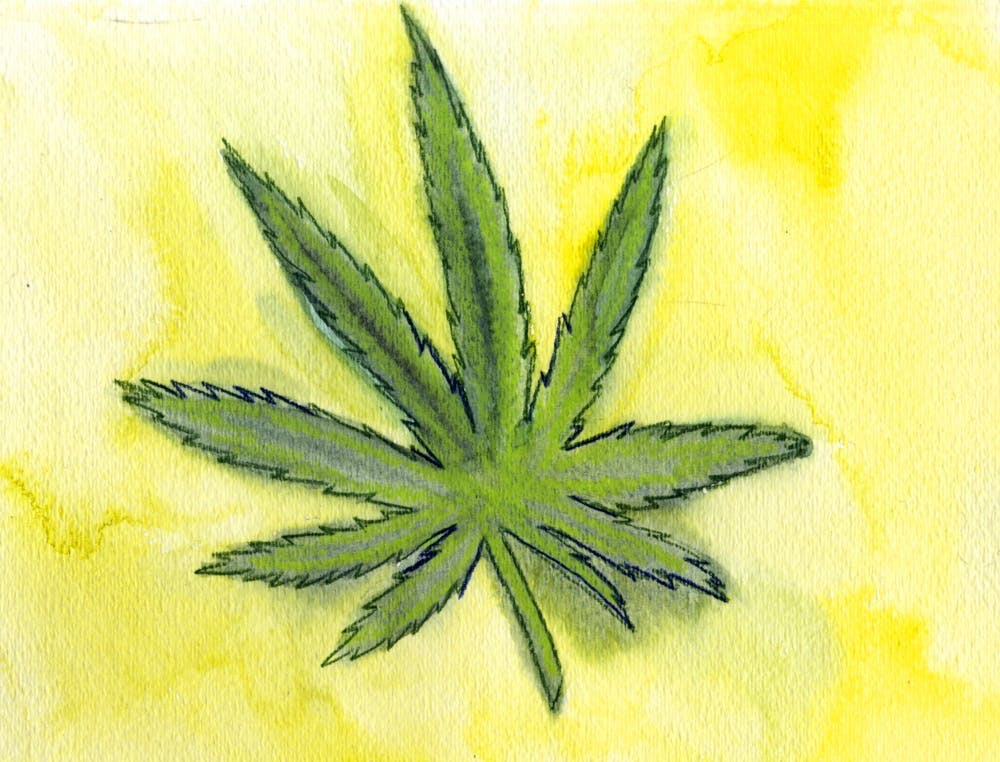On Saturday, thousands of students will continue the age-old tradition of flocking to the Main Green to celebrate one of Brown’s most renowned unofficial holidays: 4/20. This year, people may see more students participating in the festivities than in previous years.
A substantial majority of Brown students have used marijuana, with numbers increasing steadily over the four class years, according to data from the Herald’s spring poll. About three-quarters of seniors have used marijuana at least once in their lives. It’s a far cry from 2007, when just under one-third of poll respondents reported having used marijuana.
In light of proposed changes to marijuana’s federal legal status under the Controlled Substances Act, The Herald spoke to researchers at Brown to better understand the climate around marijuana use in Rhode Island.
Elizabeth Aston, an associate research professor in behavioral and social sciences, said there are a variety of reasons why marijuana might be perceived as more acceptable to use than it was in the past.
“Things are always perceived as being more safe when you make them legal,” she said. “People just assume that it’s okay to have several drinks around their kids, or it’s okay to have a couple of drinks and drive, because it’s legal. The same thing happens with cannabis.”
The ease with which marijuana can be obtained is also a factor, she added. “You must be 21 to purchase marijuana at a dispensary, but people can buy marijuana, turn around and sell it,” said Aston. “Another side of the matter is that people can grow cannabis themselves.”
Aston arrived at Brown to study the co-use of marijuana and alcohol around the time marijuana was approaching state legalization, she said. According to poll data, about four-fifths of respondents who had used alcohol in the past three months reported having used marijuana at least once in their lives.
Aston studies the value of marijuana with a behavioral economics model using a purchase task. According to Aston, being able to purchase marijuana legally makes people believe that it’s safer than it is. This narrative encourages people to “drive after using marijuana, and that can be very harmful,” she added.
Unlike alcohol, there are no tests to measure cannabis in the bloodstream, Aston told The Herald. She added that while there is “certainly” a narrative that “cannabis is less dangerous than alcohol,” it isn’t entirely true or correct.
“Many of my participants report driving after using, and they think they’re better drivers,” she said. “When we test them, they’re not better drivers.”
Cities and states stand to reap powerful revenues when marijuana is legalized and use spreads, according to Aston. “Dispensaries are very, very heavily taxed,” Aston said. “The revenue that states make on marijuana sales is astronomically high.”
Furthermore, dispensaries market “high-potency concentrates of THC” with upwards of 90% THC, Aston said. “When people start using high-potency concentrates a lot, their tolerance goes very high very quickly,” she said. “This, in turn, can make people more quick to develop cannabis use disorders.”
A severe side effect of marijuana use that Aston has seen is cannabinoid hyperemesis syndrome (CHS), or cyclical vomiting caused by cannabis use. “I think it’s probably always been around, but now it’s happening a lot more,” she said. “It’s from using cannabis, for a long period of time like this, that’s very high potency.”
It’s hard to identify CHS because sometimes patients are not aware of cannabis’ harm, Aston said. “People will present to the emergency department, thinking there’s something wrong with them that’s totally not related to their cannabis,” she said. “They often won’t even think about disclosing the fact that they’re using cannabis to the medical team, and that makes it really hard to figure out what’s going on.”
Legal or illegal, it isn’t “safe” to use marijuana, regardless of popular perception, she said, noting that any substance that “will potentially impact brain development may not be safe for people who are still maturing.”
Marijuana’s potential move to schedule III could make it easier to study this “very complicated” drug, according to Aston, who believes increased access may allow essential research on marijuana to continue.
Professor of Political Science Katherine Tate said that racial disparities in prosecution for marijuana-related offenses have partly shaped activism around the issue.
“A movement for full legalization persists and includes Black activists and politicians who feel that U.S. drug laws have significantly harmed Black Americans,” Tate wrote in an email to The Herald. She added that Black people “use marijuana at the same rate as whites based on polls, but are four times more likely to be arrested for possession of it. Black children are more likely to have a criminal arrest record than whites because of marijuana arrests.”
Tate argued that tax revenue from marijuana sales “can be used to empower minority communities through job creation and social programs,” adding that minority communities see the legalization of marijuana as “a racial justice initiative.”
“Legalization is not enough, but must be tied to social programs that address prior convictions, addiction, health and well-being, punitive policing and economic empowerment,” she wrote.
Brown’s BWell Office of Health Promotion offers resources to help students note and address problems with cannabis use. “Common signs of a cannabis use disorder” and resources on campus are linked for students on the BWell Health Promotion website.

Ranjana “Jaanu” Ramesh is a Bruno Brief-er, photographer and Senior Staff Writer covering science & research. She loves service, empathetic medicine and working with kids. When not writing or studying comp neuro, Jaanu is outside, reading, skiing, or observing Providence wildlife (ie: squirrels).





